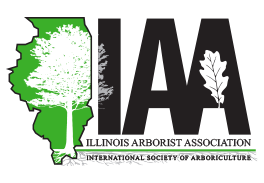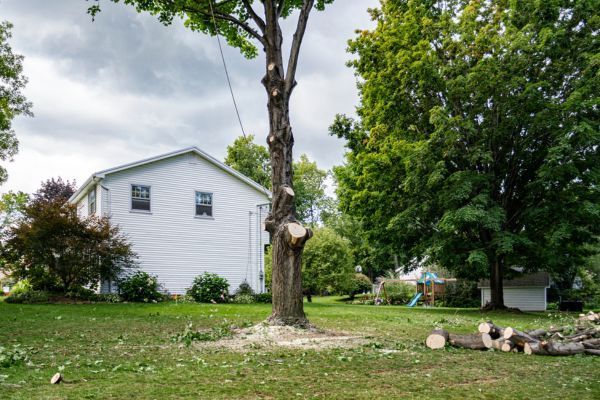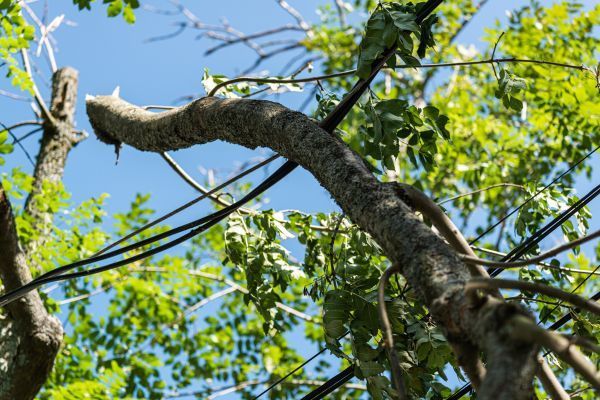Why Dead Trees Are a Liability for Wood River Property Owners
Why Ignoring a Dead Tree Could Cost You Big in Wood River, IL
If you’re a homeowner or property manager in Wood River, IL, and you’ve got a dead tree in your yard… it might be more than just an eyesore.
It might be a liability.
Dead trees pose a serious threat to your property, your safety, and even your wallet. And in a place like Wood River—where storms, wind, and seasonal shifts are common—ignoring the issue can quickly turn into a costly mistake.
In this post, we’ll walk you through exactly why dead trees are dangerous, how to spot them, and what you can do to protect your property and peace of mind.
1. Dead Trees Can Fall Without Warning
Let’s start with the obvious—and most dangerous—reason to deal with dead trees: they fall.
A living tree has moisture, flexibility, and internal strength. A dead tree? It’s brittle. It's dry. It's weak.
Which means all it takes is one wind gust, ice storm, or heavy rain, and that tree can snap like a twig—damaging your roof, fence, garage, car, or even a person.
In Wood River, where the weather can turn quickly and storms roll through often, dead trees become ticking time bombs. We've seen it all—from branches crashing through roofs to entire trunks collapsing into driveways.
If a tree looks unstable, it probably is.
2. You Could Be Liable for Damage or Injuries
Here’s something a lot of property owners don’t realize: you can be held legally responsible if a dead tree on your land falls and causes harm.
Let’s say your neighbor’s fence or garage gets smashed because your dead tree finally gave out. If the tree was clearly dead or hazardous—and you did nothing about it—you could be on the hook for the damages.
Same goes if someone is walking on your property and gets hurt. If it's determined that the tree was a known hazard, and you failed to act, you could face legal consequences.
Taking action early can help you avoid lawsuits, insurance headaches, and neighbor disputes.
3. Dead Trees Attract Pests and Disease
Dead wood is like a magnet for pests. Termites, carpenter ants, beetles, and other wood-boring insects thrive in dead trees—and once they settle in, it’s only a matter of time before they move on to nearby healthy trees, your landscaping, or even your home.
Not only that, but fungus, mold, and disease can also spread from a dead tree to others on your property. So if you’re trying to preserve your yard’s beauty or protect valuable shade trees, removing the dead one is the best defense.
4. Dead Trees Lower Property Value
Dead trees aren't just dangerous—they're also ugly. A dry, leafless tree with crumbling bark can ruin the look of your front yard or backyard. If you’re thinking about selling your home, this is especially important.
Potential buyers will notice dead or dying trees right away—and they’ll wonder:
- Is this going to fall on the house?
- How much will it cost to get this removed?
- Has this yard been neglected?
Curb appeal matters. Removing that dead tree helps protect your property value and leaves a better first impression.
5. Wood River Weather Makes the Problem Worse
If you’ve lived in Wood River, IL for long, you know the weather here isn’t always gentle. We deal with:
- Heavy spring rains
- Summer storms
- Ice and snow in winter
- Strong winds throughout the year
All of these increase the risk that a dead tree will fall or shed limbs unexpectedly. What may have been a minor issue in mild climates can become a major hazard here.
That’s why proactive tree removal is so important for local homeowners and businesses.
6. Tree Removal Is Cheaper Than Emergency Cleanup
Many people wait until it’s too late. Then, after a storm, they’re stuck paying emergency service fees, dealing with insurance adjusters, and replacing damaged property. That adds up fast.
In contrast, scheduling a professional tree removal—before disaster strikes—is typically much more affordable.
Plus, you avoid the stress and mess of dealing with a fallen tree after the fact.
7. How to Tell If a Tree Is Dead (or Dying)
Not sure if your tree is truly dead? Here are some signs to watch for:
- No leaves in spring or summer (when other trees are full and green)
- Brittle branches that snap easily
- Cracked or peeling bark
- Fungus or mushrooms growing around the base
- Large sections of missing bark
- Hollow sound when tapped with a tool
Still not sure? A certified tree professional can inspect it for you and help you decide the next step.
8. What You Should Do Next
If you suspect you have a dead or dying tree on your Wood River property, don’t wait.
Call a trusted, local tree removal company (like us at OLI Outdoor Services) to assess the situation and safely remove the tree before it becomes a bigger issue.
We offer:
- Free inspections
- Safe, insured tree removal
- Emergency storm cleanup
- Stump grinding and full cleanup
Our experienced crew knows what to look for and how to handle even the most difficult removals—without damaging your lawn or home.
Final Thoughts
Dead trees aren’t just a nuisance—they’re a real liability. From property damage and safety risks to legal headaches and lost curb appeal, the costs of ignoring a dead tree far outweigh the price of removing it.
As a local company, we’ve seen firsthand how fast a dead tree can go from “not a big deal” to “total disaster.”
If you’re in the Wood River, IL area and you’ve got a tree you’re unsure about—give us a call. We’ll give you honest advice and a no-obligation quote so you can make the right decision for your property and your peace of mind.
SHARE POST
SEARCH ARTICLE












